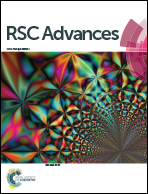Fire and mechanical properties of a novel free-radically cured phenolic resin based on a methacrylate-functional novolac and of its blends with an unsaturated polyester resin
Abstract
A novel phenolic novolac resin bearing methacrylate functional groups has been synthesized by reaction of the novolac with methacryloyl chloride. This resin has been mixed with styrene and cured (crosslinked) free-radically under the relatively low temperature conditions used to cure unsaturated polyester/styrene mixtures, i.e. there is no need to employ the high temperatures and pressures that are required to cure conventional phenolic resins. Homogeneous cured blends of the methacrylated novolac with unsaturated polyester and styrene have been prepared also. The cured methacrylated novolac, and its blends with unsaturated polyester, are rigid materials with good mechanical strength, and have glass transition temperatures, thermal stabilities and flame retardancies superior to those of cured unsaturated polyester alone.


 Please wait while we load your content...
Please wait while we load your content...